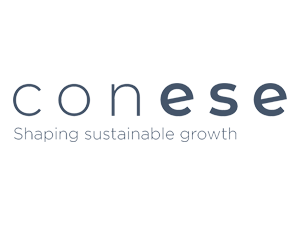Resumen
INTRODUCCIÓN: Las redes sociales se han convertido en un escenario prioritario en las relaciones interpersonales de la adolescencia. Pocos estudios exploran el uso de las redes y la expresión de comportamientos prosociales en línea (CPO) que tienen la intención de beneficiar a los demás o promover relaciones armoniosas. Algunas características de las redes sociales pueden influir en este tipo de comportamientos: a) las audiencias online pueden tanto estimular como restringir; b) sentirse evaluado y observado en las redes sociales conlleva el uso de estrategias de manejo de impresiones; c) los emoticonos y emojis, permiten transmitir emociones y facilitar la interacción; d) el anonimato, asociado con conductas antisociales, puede influir sobre comportamientos más positivos en línea.
METODOLOGÍA: Se analiza de qué forma la percepción de las redes sociales influye en la emisión y recepción de CPO. Estudio transversal de encuesta con 1299 adolescentes. Medidas: 1) Cuestionario sobre frecuencia de uso: a) de redes sociales y mensajería instantánea, b) emoticonos/emojis y percepción sobre la audiencia, c) anonimato y sentirse evaluado; 2) Online Prosocial Behavior Scale evalúa la CPO emitida (CPOE) y recibida (CPOR).
RESULTADOS: Se llevaron a cabo tres análisis de regresión con diferentes grupos de VIs: 1) frecuencia de uso de redes sociales y mensajería, 2) percepciones sobre las redes sociales e internet, y 3) uso de iconos. En todos se introdujo la variable género en un primer paso para controlar su efecto. La frecuencia de uso de medios sociales explicó el 11,9% de la varianza de la CPOE, siendo el género la variable con mayor porcentaje de varianza (6,1%). En la CPOR los análisis de regresión explicaron el 12,8% de la varianza. En el uso de iconos explicó el 17,2% de la varianza de la CPOE y el 11,6% de la CPOR. En ambos casos el uso de emojis de expresión facial es la variable que explica el mayor porcentaje (9,8% y 7,2%). Las variables relacionadas con la percepción de las redes sociales (sentirse evaluado, anonimato y audiencia) explicaron el 10,6% de la varianza de la CPOE. Estas mismas variables explicaron el 7,5% de la varianza de la CPOR. En el caso de la variable de anonimato existe una correlación negativa con la CPOE y la CPOR.
CONCLUSIONES: La frecuencia de uso de mensajería instantánea y redes sociales predice significativamente la emisión y recepción de CPO en la adolescencia. Así, las redes sociales contribuyen a la percepción de recibir apoyo de los demás y su frecuencia de uso se asocia con una mayor percepción de recibir CPO. El sentimiento de audiencia se asocia a una mayor emisión y recepción de CPO. Esto podría deberse a que las CPO son una estrategia para manejar la impresión que causan en los demás. El uso de emojis es la variable que predice con mayor fuerza las CPO tanto emitidas como recibidas. Estos iconos pueden ser un facilitador de CPO, ya que implican empatizar con la emoción del otro. El anonimato, en esta muestra, parece inhibir las CPOE y CPOR lo que requiere atención en futuros estudios.
Palabras Clave / Adolescencia / Conducta prosocial online / Mensajería instantánea / Percepción de los medios sociales / Redes Sociales
Abstract
INTRODUCTION: Social networks have become a priority setting in interpersonal relationships in adolescence. Few studies explore the use of networks and the expression of online prosocial behaviors (OPB) that are intended to benefit others or promote harmonious relationships. Some characteristics of social networks can influence this type of behavior: a) online audiences can both stimulate and restrict; b) feeling evaluated and observed in social networks entails the use of impression management strategies; c) emoticons and emojis allow emotions to be transmitted and interaction to be facilitated; d) anonymity, associated with antisocial behaviors, can influence more positive behaviors online.
METHODOLOGY: this study analyzed how the perception of social networks influences the issuance and reception of OPB. Cross-sectional survey study with 1299 adolescents. Measures: 1) Questionnaire on frequency of use: a) of social networks and instant messaging, b) of emoticons/emojis and perception of the audience, c) about anonymity and feeling evaluated; 2) Online Prosocial Behavior Scale, which evaluates the performing (OPBP) and receiving (OPBR) OPB.
RESULTS: Three regression analyzes were carried out with different groups of IVs: 1) frequency of use of social networks and messaging, 2) perceptions about social networks and the Internet, and 3) use of icons. In all of them, the gender variable was introduced in a first step to control its effect. The frequency of use of social media explained 11.9% of the variance of the OPBP, with gender being the variable with the highest percentage of variance (6.1%). In the OPBR, the regression analyzes explained 12.8% of the variance. The use of icons explained 17.2% of the variance of the OPBP and 11.6% of the OPBR. In both cases, the use of facial expression emojis is the variable that explains the highest percentage (9.8% and 7.2%). The variables related to the perception of social networks (feeling evaluated, anonymity and audience) explained 10.6% of the variance of the OPBP. These same variables explained 7.5% of the variance of the OPBR. In the case of the anonymity variable, there is a negative correlation with the OPBP and the OPBR.
CONCLUSIONS: The frequency of use of instant messaging and social networks significantly predicts the performing and receiving of OPB in adolescence. Thus, social networks contribute to the perception of receiving support from others and their frequency of use is associated with a greater perception of receiving POC. The online audience perception is associated with a greater emission and reception of OPB. This could be because OPBs are a strategy to manage the impression they make on others. The use of emojis is the variable that most strongly predicts both issued and received OPBs. These icons can be a OPB facilitator as they involve empathizing with the other’s emotion. Anonymity, in this sample, seems to inhibit OPBP and OPBR, which requires attention in future studies.
Keywords / Adolescence / Instant messaging / Online prosocial behavior / Perception of social media / Social networks
FIRMANTES
| Nombre | Adscripción | Procedencia |
|---|---|---|
| Vanesa Pérez-Torres | Universidad Rey Juan Carlos | Madrid |
| Helena Thomas-Currás | Universidad Rey Juan Carlos | Madrid |
| Miguel Ángel López-Sáez | Universidad Rey Juan Carlos | Madrid |



















